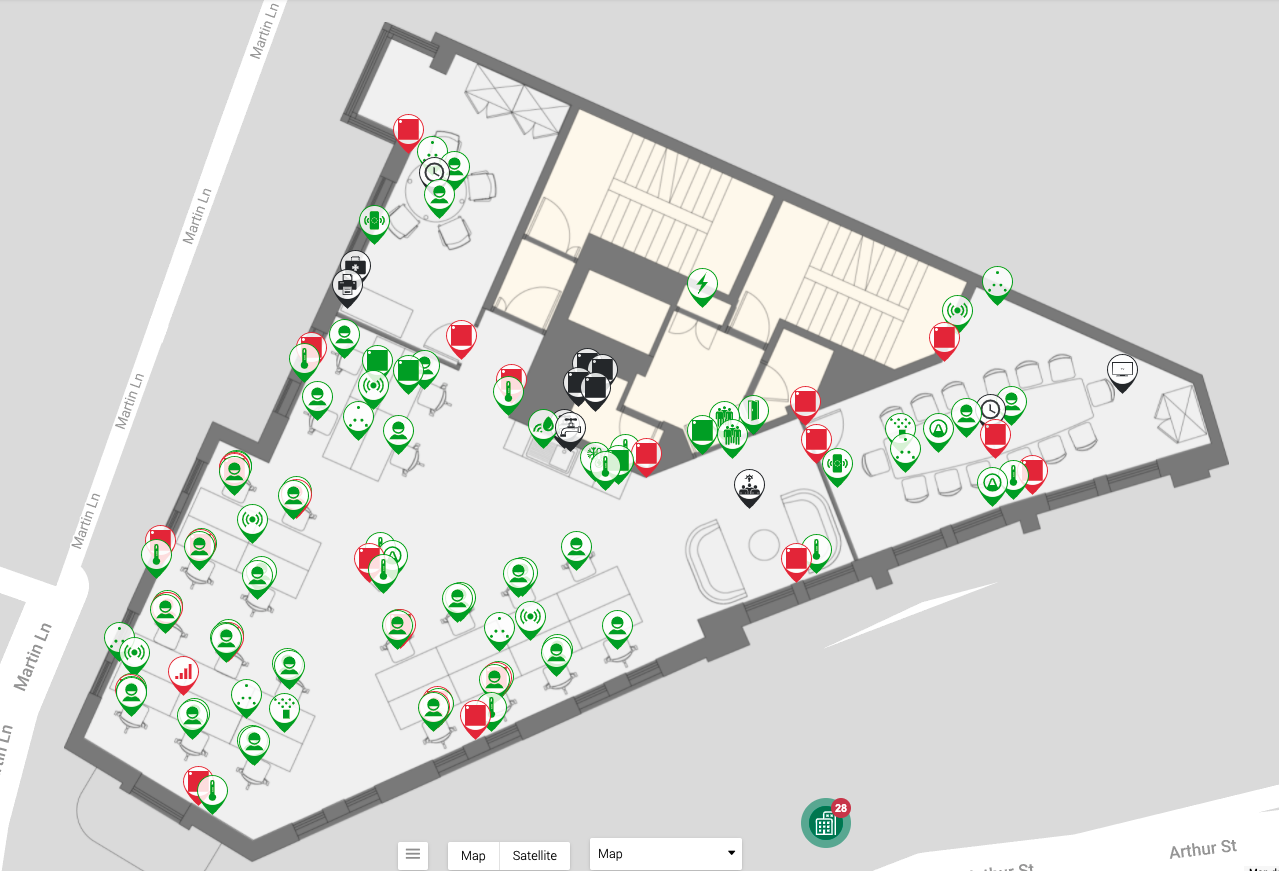Much has been said about smart building technology in commercial real estate, especially by us. It’s a ‘must-have’, and its insights will ‘transform the office’.
The term, however, has been collectivised. It is used to refer to digital twin platforms, property management software, Indoor Air Quality (IAQ) measurement platforms, and other solutions. Where the future of the office is concerned, everything is smart, so it can be hard for CRE professionals to put their required solution in a practical context.
Our smart building platform
Our Smart platform empowers property managers by tracking IAQ, building occupancy and traffic patterns, office-by-office system usage, and more.
It is ‘smart’ in at least three ways:
- It performs these tasks instantly and automatically. Bluetooth sensors capture information and send it to a centralised dashboard for analysis and adjustment.
- It connects property managers with tenants in an office building. Data on CO2 density or lobby traffic can be easily communicated, because the numbers are known and their meaning is clear.
- It boosts owner ESG (Environment, Social and Governance) initiatives, which can be used by asset managers to increase asset value and brand awareness, validate capex decisions, secure new tenancies (alongside leasing teams), and more.
Why is smart building technology important now? In the wake of COVID-19, a new breed of hybrid-working office worker has emerged. Tenants (that is, employers) are rethinking their space requirements, because they wish to prioritise flexibility and thus secure the best talent for their business. Therefore, the future of the workplace will be dictated by the wants of individuals.
This calls for well-amenitised, healthy, safe, comfortable, and demonstrably productive spaces. CRE owners who embrace technology in pursuit of this kind of workplace experience will thrive – and we know this, because it’s already proven that the best workplaces court the highest occupancy rates.
Let’s look more closely at the features of an IAQ and building occupancy smart platform.

First, the platform provides a top-down visual of our office floor, navigable on a floor-by-floor basis.
At a glance, you can see all of the sensors and touchpoints configured on that floor.
Occupancy sensors (denoted by the symbol of a person) are green when occupied (that is, someone is sitting at the desk or in the area to which a sensor is assigned).
Temperature sensors (thermometer symbol) are green when the temperature for that section of floor is within the preset thresholds. They will turn red when an area becomes too hot, or too cold.
IAQ environmental sensors (cone-within-a-circle symbol) track your IAQ, including the presence of CO2. This is particularly crucial, since high CO2 levels are linked strongly to decreased productivity. If there’s too much CO2 present, the symbols will turn red and the system will issue an alert. For Facilities Managers, this is a simple interface to monitor as part of normal daily operations.

Our Smart platform goes further: It’s possible (and simple) to monitor your refrigerators, Wi-Fi, and appliances (such as TVs and computers) alongside the bluetooth sensors you place to monitor IAQ, occupancy and traffic. All of those data are presented to you in user-friendly dashboards.
Turn data into contextualised insights
Smart really is smart. The Dashboard section of our platform takes all of the data from the sensors across your building (or portfolio) and synthesises them to produce quick-glance scores and benchmarks. The Wellness tab, for example, calculates Air Quality and Cognitive Performance scores using measurements of temperature, CO2, humidity, and more.

Depending on your goals, you might also opt to track the relationship between CO2 and person-density over time. Maybe you want to measure occupancy by department, or floor, or meeting room type. Your personal Dashboard is configurable based on your goals: You filter only the insights you want.

The best part: Because these insights are easily and quickly tracked – live updates come in every 60 seconds – you can easily communicate updates and improvements to your tenants. You can prove your commitment to workplace health, safety, performance, ESG, and more, all with hard data.



